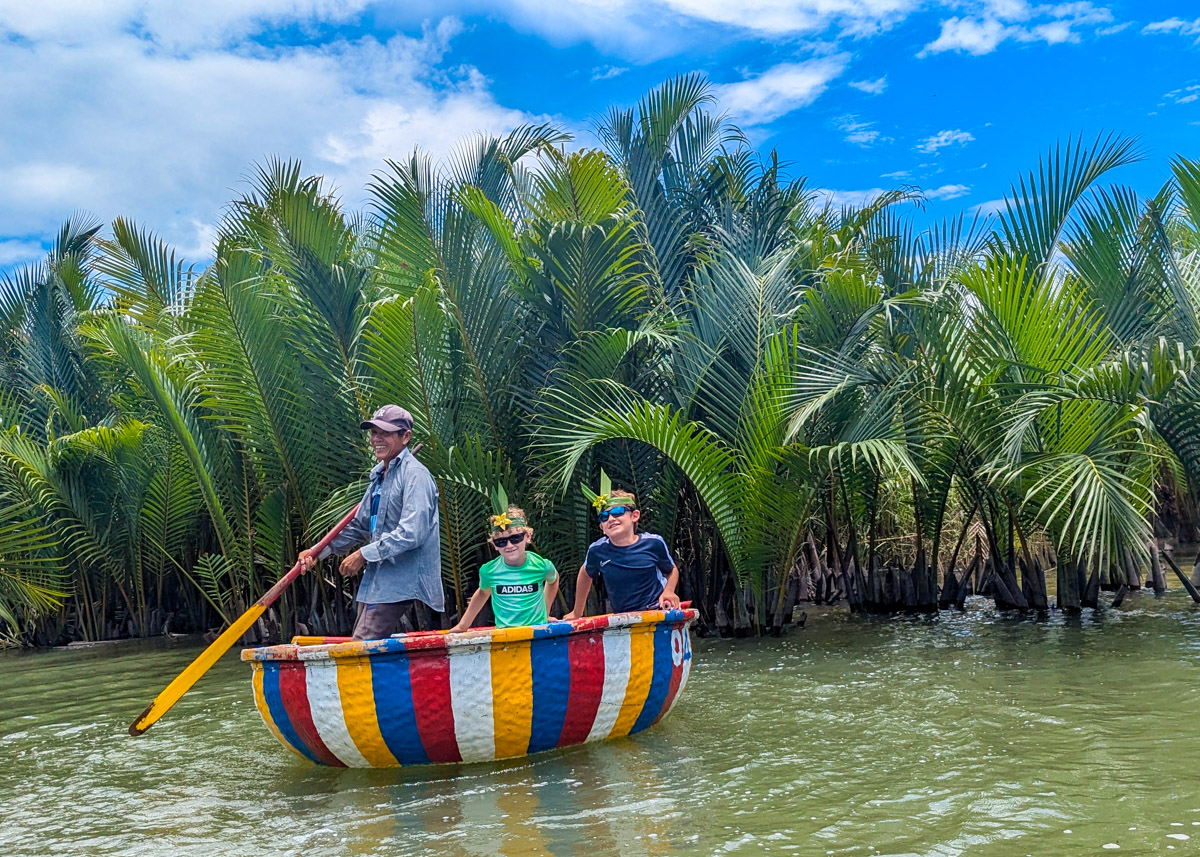After spending 45 days in Vietnam as a family, we’ve built up not only a large collection of fantastic memories but also an equally extensive batch of tips and suggestions. Whilst us parents had been to Vietnam pre-kids, it was the first time visiting as a family, and a trip Vietnam with kids can present its own set of challenges.
Part of the excitement of travel is making your own mistakes of course, but sometimes it’s better to get a heads-up and avoid some of the most common pitfalls. So here are our top tips for a visit to Vietnam with kids: some are essential, some might save you money, and some are just good to know, but hopefully they’ll all go some way to making your trip to this incredibly diverse country that much smoother.

Vietnam with kids travel guide
Your comprehensive guide to travelling Vietnam with kids, including accommodation suggestions and an itinerary, from a family that spent 45 day overlanding from HCMC to Hanoi.
1. Cash and the 3 Times Table
More so than in other countries across Southeast Asia, cash is king in Vietnam, with many tourist destinations only accepting payment in cash. This includes the major tourist sites such as the Cu Chi Tunnels, HCMC War Remnants Museum and the tourist caves in Phong Nha.
In some countries, tourists feel like millionaires but in Vietnam that’s literally the case. With exchange rates to the British Pound hovering around VND35,000, or VND25,000 to the US$, even the smallest purchase can run into the hundreds of thousands. You’d be forgiven for wondering if your first purchase should be a calculator.
It takes a little getting used to but once you’ve been here a while, it all starts to settle down. In everyday conversation and in most shops, restaurants, etc, you’ll find that the thousands are often ignored when prices are quoted. So a shopkeeper might tell you a t-shirt is ‘fifty’, meaning VND50,000. You’re never really dividing by thirty thousand, instead you’ll frequently use the three times table to work out prices.
Vietnamese banknotes come in denominations of 500,000, 200,000, 100,000, 50,000, 20,000, 10,000, 5,000, 2,000, 1,000. Smaller notes are also in circulation but their value is so small that you very rarely see them. A VND1,000 note is worth about 3p or 4c.

2. ATMs and credit cards
ATMs can be hit-and-miss in Vietnam, even in larges cities such as Hanoi and HCMC, it’s not uncommon to find your card is rejected, or no cash is available. Once you find an ATM branch which works with your card, it’s best to stick with them each time you need cash.
The ATM we got on best with was ACB, which never rejected our card, always had cash available, and didn’t charge us any withdrawal fees (although we do have a special international credit card through Barclays we use for travelling, so double-check your own situation). The maximum withdrawal limit for each transaction was VND3,000,000 and we often made three withdrawals, one after the other.
It varies, but typically you’ll be given five VND500,000 notes and then a mixture of VND200,000, VND100,000 and VND50,000 notes. We never had too much trouble using the larger notes to pay for purchases, and shopkeepers usually had change available.
As we mentioned, credit cards are often not accepted, even at hotels or larger tourist sites. There isn’t really a pattern to when and where they’re accepted, but it seemed the official/government owned places were more likely to only take cash. Smaller hostels and guesthouses nearly always preferred cash so it’s best to always have cash on you and treat credit cards as a bonus.
If you do use a credit card, it’s commonplace for 3% to be added to the bill, especially at hotels and shops. Towards the end of the trip, we realised that many hotels are happy to accept payment by bank transfer and they all have a piece of paper with their details. If your bank account is setup to facilitate online transfers to foreign bank accounts, it’s the best way to pay, and you’ll save the 3% credit card fee.
3. Is everything as cheap as people say?
We receive plenty of cultural questions about the countries we visit, but one of the most common is ‘how much is a beer?’. For a long time, the almost mythical glass of 10p beer we found in Hoi An in 2007 was the benchmark. Whilst it’s still cheap in Vietnam, if you’re visiting the tourist hotspots, certain items are perhaps not as cheap as you might be expecting.
Local items (e.g. things locals will consume) are cheap. It’s easy to find Pho Bo (meat noodle soup) for less than VND40,000 with a bottle of Saigon beer usually VND20,000. Clothing from market stalls, fruit and veg, bottled water and taxis are also very affordable.
Western comforts such as a meal at Pizza Hut, chain-hotels or theme-park entry are western prices, so will feel expensive if you’re trying to stick to a budget. For instance, the Fansipan cable car in Sapa was almost £90 for our family of four! That’s expensive by UK standards, let alone Vietnam. And a Halong Bay cruise can set you back about £1000 for a family of four.
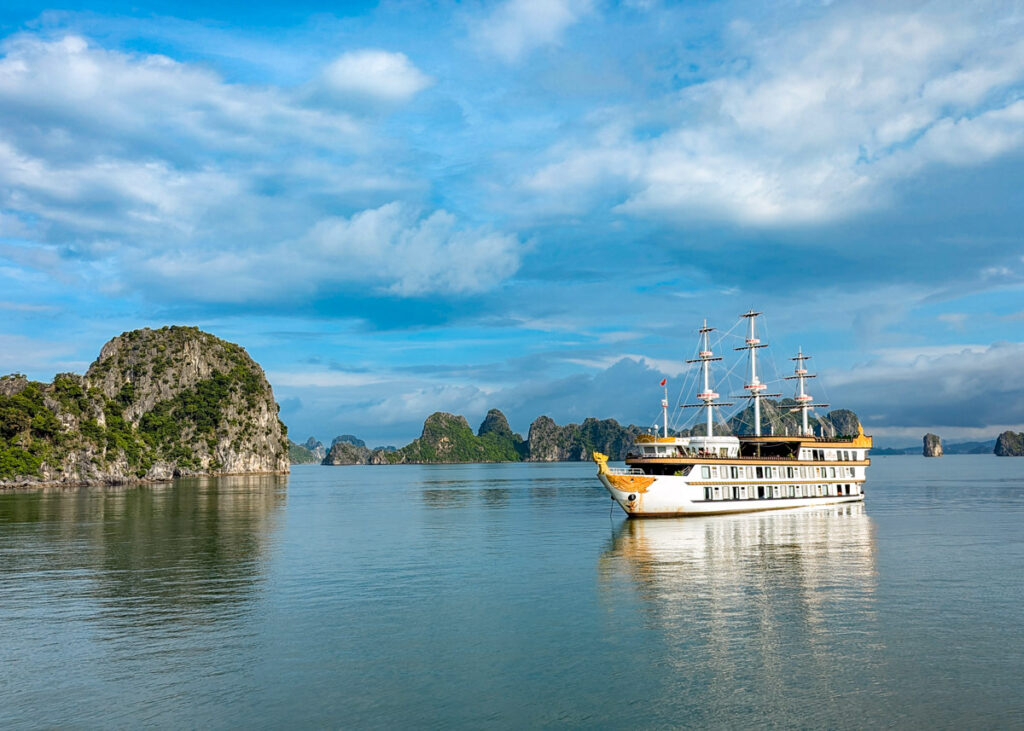
4. The American War
Despite the intervening years, the events of 1945 to 1975 still exert cultural influence and reflection on the country and it pays to be careful when talking to locals about that time. Especially in what was once North Vietnam, you’ll understandably find some older people less keen to talk about both Indochina Wars and always remember that the ‘Vietnam War’ is a western construct; in Vietnam, it’s known as the ‘American War’.
Whenever you visit places like the Cu Chi Tunnels, War Remnants Museum, or Hoa Lo Prison, keep in mind that the material is presented very much through the lens of the Vietnamese government and they’re not afraid to tell a one-sided story. Your kids might need some guidance on how all this information fits into the larger historical picture. Similarly, museums here don’t shy away from the horrors of war, so younger kids will need shepherding through the most upsetting and graphic sections.


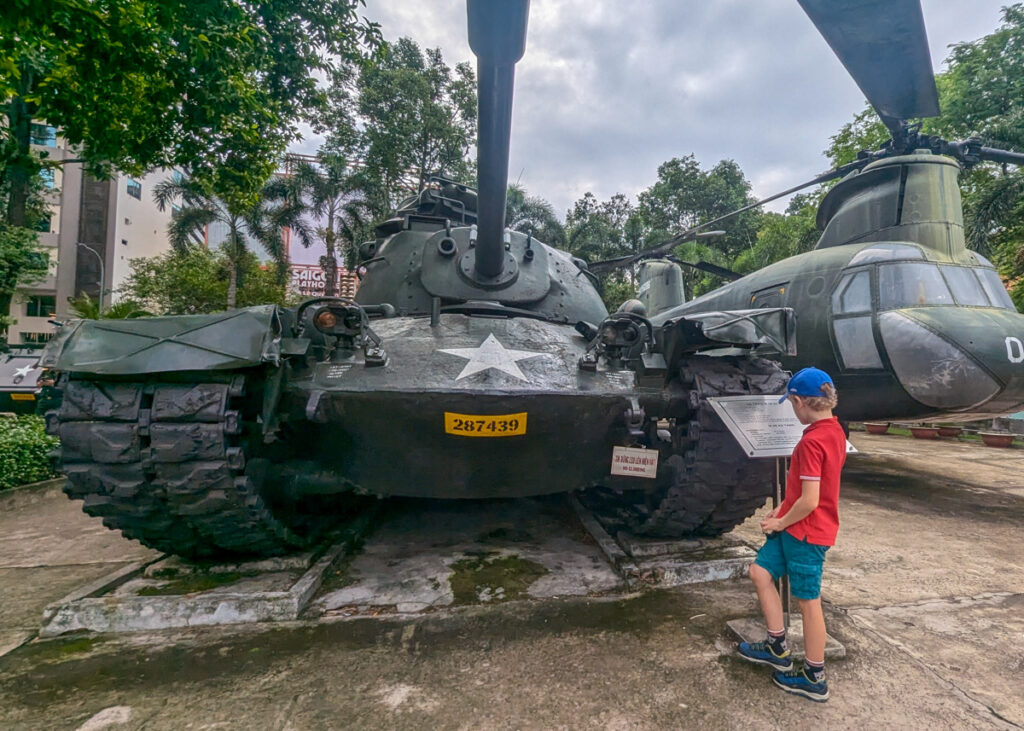
5. Travelling around Vietnam
For long-distance travel, the sleeper trains and sleeper buses are both excellent options. Trains are a better option for overnight journeys, especially if you book a private compartment for your family (available in two, four and six berths). Sleeper buses work really well on day trips, ideally for journeys less than six hours. The best sleeper buses (referred to as ‘VIP Cabins’) offer lie-flat beds, privacy curtains, water, WIFI and charging points.


Try to book in advance if you’re travelling on public holidays or weekends, especially on the busier routes (e.g. to Sapa or HCMC). If you need an exact day/time, book a week or so in advance if possible. We used Baolau and 12Go for booking both buses and trains throughout our trip. The booking window opens from 90 days prior to travel for some routes, 30 days for others.
Within cities, as a travelling family, it’s always best to use Grab taxis rather than ‘normal’ taxis or trying to navigate the bus network. Don’t even consider hiring a car (which is next to impossible for tourists in any case) as the unofficial road rules are incomprehensible for visitors. Grab cars can be used to get anywhere and everywhere in the country, from a short hop across HCMC, two-hour journeys to Cu Chi Tunnels, or picking you up from your remote homestay in Sapa. They’re also an excellent option from the airports, helping to avoid the taxi sharks who encircle new arrivals.
6. How long can you stay for?
Vietnam has recently relaxed their visa requirements, so the days of pre-arranging visas at an embassy are a distant memory for many visitors. Tourists from the UK (for example) can enter the country for 45 days without a visa if they arrive at a major airport. It can differ at some land borders so check in advance with the Vietnamese embassy in your home country before arriving.
If 45 days isn’t long enough, or you need multiple entries, you can apply for an e-visa in advance, which is good for 90 days. Apply via the official site and you’ll find the process smooth and easy to follow.
If you enter visa-free, do double check you’ve been given a 45 day duration (it’s sometimes a good idea to explain this is what you require to the immigration officer before they stamp). The 45 days will include the day you arrive, so don’t arrange your outward flight too close to the limit.
7. Do you speak any English?
We’re the first to admit that our lack of linguistic skills is an embarrassment, and we shouldn’t always rely on other people speaking English. However, it’s a fact that English is widely spoken in Southeast Asia, especially Malaysia, Thailand and (to a lesser extent, Cambodia). This isn’t the case in Vietnam.
Aside from HCMC and Hanoi, almost no-one spoke any English, including at hotels, tour agencies and restaurants. It’s manageable when all you need to do is point to a menu in a restaurant, less so when you’re trying to book a multi-day tour.
To navigate this, you’ll need Google Translate and a lot of patience. Don’t expect to arrange tour bookings, change transport connections, or have your eggs cooked a different way without expending plenty of energy. Unfortunately for most people, learning Vietnamese isn’t an option for a short visit.
8. Safety first and crossing the road
Vietnam is a safe place to visit as a family, certainly in terms of violent crime and your chances of being a victim. As long as you follow the usual precautions around hiding valuables, pickpockets and dark alleyways, your visit is going to be safe and secure.
There are a few low-level scams in operation, usually centred around street-vendors blurring the lines between ‘free’ samples and expensive purchases. As long as you realise that very few things in life are free, you’ll be fine. We usually find when we’re travelling as a family, people are friendly and the dodgy characters give you a wide berth.
Health and safety isn’t up to Western standards, and you’ll see your fair share of exposed wires and missing drain covers as you walk around towns and cities.
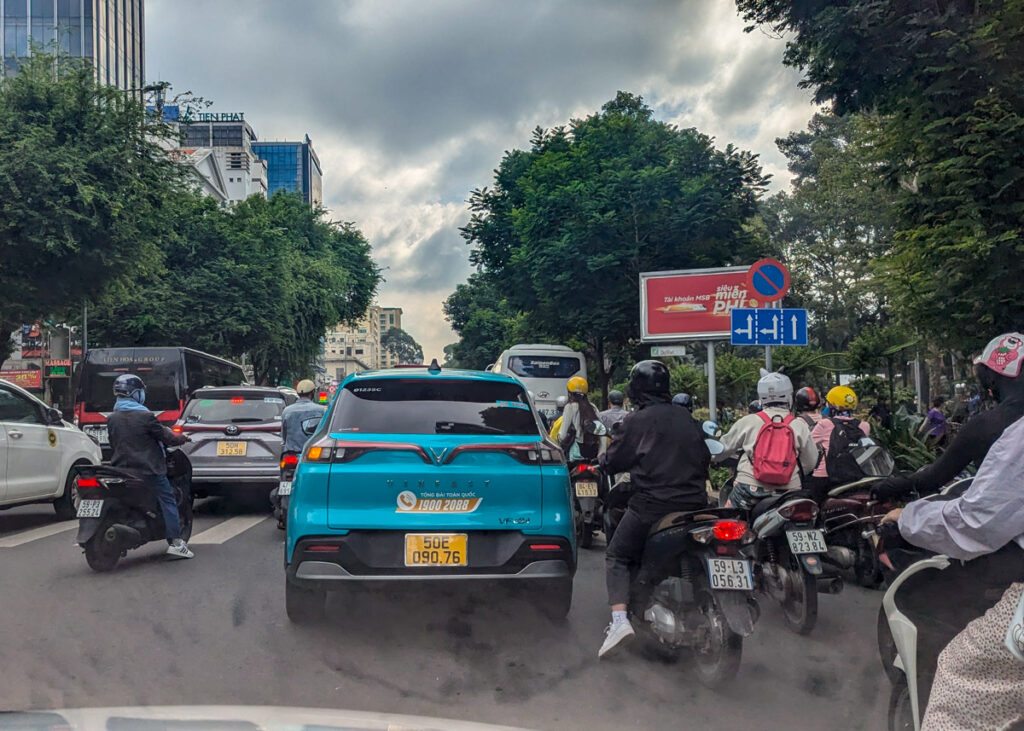
Keep a close eye on your kids, especially when crossing the road which, for the uninitiated, can feel like an adrenaline sport. The basic rule is to slowly make your way across the road, keeping eye-contact with the oncoming car or moped drivers. As long as you don’t make any sudden moves, they’ll work their way around you and the sanctuary of the pavement will eventually appear in front of you.
Some people will blithely tell you to never bother waiting at the side of the road as no gap will ever appear. There’s some truth to this as the roads are always busy but we did find that sometimes it pays to hold back for a couple of seconds and assess if a slightly less busy moment is appearing. Crossing at traffic lights makes life easier too. Try to position yourself between the oncoming traffic and the kids, and remind them not to poke their heads out, however impatient they become.
9. Food in Vietnam
We mostly enjoyed the food, but it’d be wrong to say it’s our favourite food destination in Southeast Asia. The kids struggled slightly to find their go-to meal, although the noodles often went down well. On the whole, we found the food very un-spicy (calling it bland might be unfair), so the boys never struggled with the excess heat. After a few days, the packet noodles, soup and oily eggs slightly lost their appeal.
Breakfast was always quite uninspiring, with the choice often between packet noodles and soup, or fried eggs and bread. We’d suggest never paying extra for the hotel breakfast unless it’s a full buffet; you’ll usually find better and cheaper options outside the hotel. There are always plenty of fruit and veg options in the market, with mango, pineapple and strawberries our usual choice.


10. Stay connected
WIFI is everywhere in Vietnam, including the most remote homestay. The only place we didn’t get WIFI was on the more remote sections of the Halong Bay cruise. It’s very common for your hotel or tour guides to contact you via WhatsApp, which makes for an easy way to stay in touch and also mitigates some language barriers.
We always tend to use an e-sim when we’re travelling as we need to keep our UK sims in place for the steady flow of one-time passcodes. An e-sim also avoids the need to visit a physical shop to buy a local SIM, which often needs your passport and a registration process. E-sims are more expensive than a local physical SIM, but in our opinion the price is worth paying for the convenience. Mobile signal is almost universal in Vietnam and the speeds were always fine for our needs (usually 4G).
We use Airalo for our e-sims, click here to buy your Vietnam e-sim.
11. How hot does it get in Vietnam?
To a much larger extent than in other countries in the region, Vietnam experiences distinct temperature differences, particularly in the north of the country, where snow and typhoons are a regular fixture in the calendar. In the winter months (November to March), it’s common for there to be snow and frost around Sapa and the surrounding mountains.
Northern Vietnam (including Hanoi) doesn’t get as cold as the mountains, but the temperatures in the winter can drop into the teens, when the weather is also drier. If you’re visiting these area during the winter, make sure you pack some warm-weather clothing for the whole family.
Elsewhere in the country, the weather is more what you’d expect in Southeast Asia, with wet and dry seasons. It can get very hot during the summer, sometimes nudging forty degrees, so you’ll need to plan your activity time to avoid the hottest part of the day.
Typhoons and floods can have an impact during the wet season, especially in Northern Vietnam and around Halong Bay where cruises are occasionally postponed due to the weather. Don’t let this put you off visiting completely at this time though, the weather is unpredictable but often the rain only lasts for a short time each day, leaving behind a more refreshing temperature that kids will prefer.
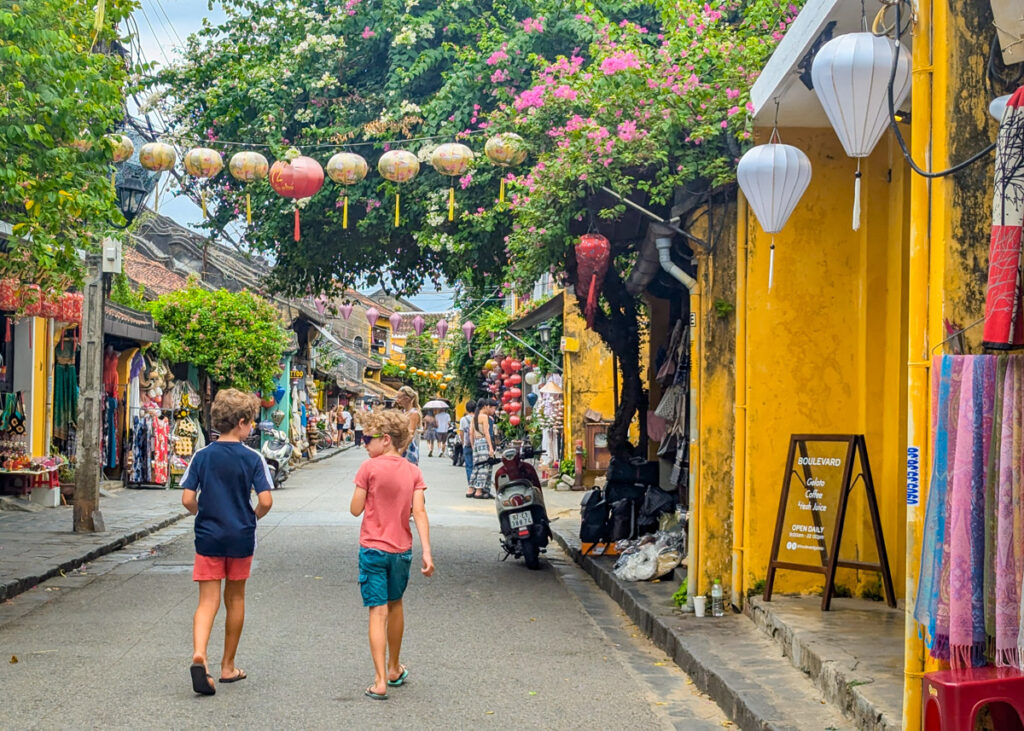
12. Don’t try and do it all
Many itineraries you see online and in guide books, some of which are aimed at families, will try to tell you to pack too much in to your Vietnam adventure. There seems to be a preoccupation with ticking off both Hanoi and HCMC, whatever the cost and however much it’ll force you to rush around the country.
If you have several weeks, then it’s doable, but anything less than three weeks, you’re better off choosing between North or South Vietnam and focusing your time there. We know from experience that the long narrow geographical shape of Vietnam creates its own natural route and itinerary, but sometimes it’s better to slow down and let the kids spend a few extra days at the beach or the picturesque homestay you discovered.
13. Ditch the buggy
Vietnam’s pavements aren’t really made for walking. Every square inch is either filled with food-carts, people, or mopeds, so you’re seldom able to take more than two strides before a detour onto the road is required. If you’re travelling with young kids, our advice is to ditch the buggy and use a back-carrier instead.
Not only will your life be easier and safer, the kids will get a much better view of Vietnam street life from up high.
14. You won’t be alone but you can be
Vietnam is busy, busy, busy and the tourist scene has changed dramatically over the past twenty years. With thousands upon thousands of visitors arriving from South Korea, Japan and China, on top of the domestic and Western tourists who have always holidayed here, it can feel overwhelmed with tourists at times.
There are some techniques you can apply to get away from crowds though. Many visitors are here on tours and do everything as part of a tour group. If you can get out early to visit the sights, you’ll beat the tour groups who often don’t leave until after a leisurely breakfast. Similarly, avoid weekends when the domestic tourists are out in force.

In tourist hotspots like Sapa, look for accommodation outside the town centre and instead head into the countryside where you’ll find scores of friendly and quiet homestays. It’s always easy to summon a Grab when you need to re-join the fray.
You may also like to read:
Riding a Vietnam sleeper train: what to expect and how to book
Halong Bay with kids: the BEST cruise for families
Ho Chi Minh City with kids: top 12 things to do in and around the city

